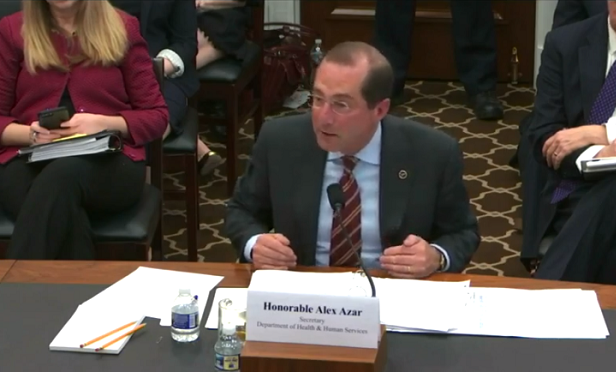
 HHS Secretary Alex Azar (Photo: Screen Capture/House Appropriations)
HHS Secretary Alex Azar (Photo: Screen Capture/House Appropriations)
Pharmaceutical companies will have to disclose drug prices in television commercials in the U.S. for the first time, as the Trump administration begins to put in place a plan to lower prescription costs.
The Centers for Medicare and Medicaid Services (CMS) and the parent of CMS, the U.S. Department of Health and Human Services, finalized a rule Wednesday that would require drugmakers to disclose a drug's cost if its price before rebates and discounts is above $35 for a month's supply or the usual course of therapy. The rule is the first move by regulators to implement a blueprint to lower drug prices laid out last year by President Donald Trump.
"Patients who are struggling with high drug costs are in that position because of the high list prices that drug companies set," HHS Secretary Alex Azar said in a statement unveiling the rule. "Making those prices more transparent is a significant step in President Trump's efforts to reform our prescription drug markets and put patients in charge of their own health care."
The rule will go into effect 60 days after it's published, Azar said on a conference call with reporters.
Federal Register officials say the rule will be published Friday.
Drugmakers had started disclosing prices online, with the Pharmaceutical Research and Manufacturers of America urging members to redirect patients watching TV ads to the websites, which discuss different pricing scenarios rather than just the list price.
The trade association said the rule would give patients watching TV the false impression that they're required to pay the full price and that the ads would deter patients from seeking treatment. The group also said the proposal would violate the First Amendment by compelling commercial speech.



